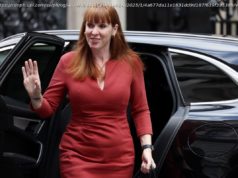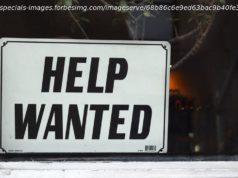WASHINGTON — The Federal Reserve, as expected, raised its benchmark interest rate by one quarter of a percentage point Wednesday and indicated that it plans…
WASHINGTON — The Federal Reserve, as expected, raised its benchmark interest rate by one quarter of a percentage point Wednesday and indicated that it plans to raise rates again in December.
The Fed repeatedly described economic conditions as “strong” in a statement following a two-day meeting of its committee that sets monetary policy.
“Economic activity has been rising at a strong rate,” the statement said, adding that job growth, and the growth of household spending and business investment, were also robust.
The Fed moved its benchmark rate up to a range between 2 and 2.25 percent. It is the eighth time since the 2008 financial crisis that the Fed has raised rates and the third time this year. The decision was unanimous.
Fed Chairman Jerome Powell, speaking at a news conference, said that “it’s a particularly bright moment” for the U. S. economy but acknowledged that, while growth is strong and unemployment is low, the returns have not been felt evenly.
“The benefits of this strong economy have not reached all Americans,” he said, adding that the Fed is not seeking to check growth by raising rates.
“My colleagues and I are doing all we can to keep the economy strong, healthy and moving forward,” Powell said.
For the first time in recent years, the Fed did not describe monetary policy as “accommodative,” indicating that its benchmark interest rate is rising back to a level that the Fed regards as neutral, meaning monetary policy is neither stimulating nor restraining economic growth.
That does not mean the Fed is done raising rates. Fed officials warned last year that there was no need for a tax cut in the midst of a steady economic expansion. President Trump and Congress ignored that advice, cutting taxes and increasing spending. The result has been a short-term increase in economic growth, which has reinforced the Fed’s conviction that it needs to continue raising interest rates to maintain control of inflation, which is rising at roughly a 2 percent annual pace.
In a new round of forecasts the Fed published Wednesday, members of the policymaking committee predicted that the central bank would raise rates five more times by the end of 2020.
Trump has publicly bemoaned the higher rates. “I don’t like all this work that we’re putting into the economy and then I see rates going up,” he told CNBC in July. “I am not happy about it.”
So far, however, there is little sign the Fed is crimping economic growth. Rates paid by consumers have climbed more slowly than the benchmark rate. The average rate on a 30-year mortgage loan, for example, was 4.55 percent in August, up from 3.96 percent in December 2015, according to Freddie Mac. That is less than a third of the Fed rate’s increase over the same period.
Powell, asked about Trump’s displeasure with rate increases, said the Fed is carrying out its mission and that “we don’t consider political factors.”
The jobless rate also continues to drop and the Fed now expects it to reach 3.7 percent in 2018, the lowest level since 2000.






